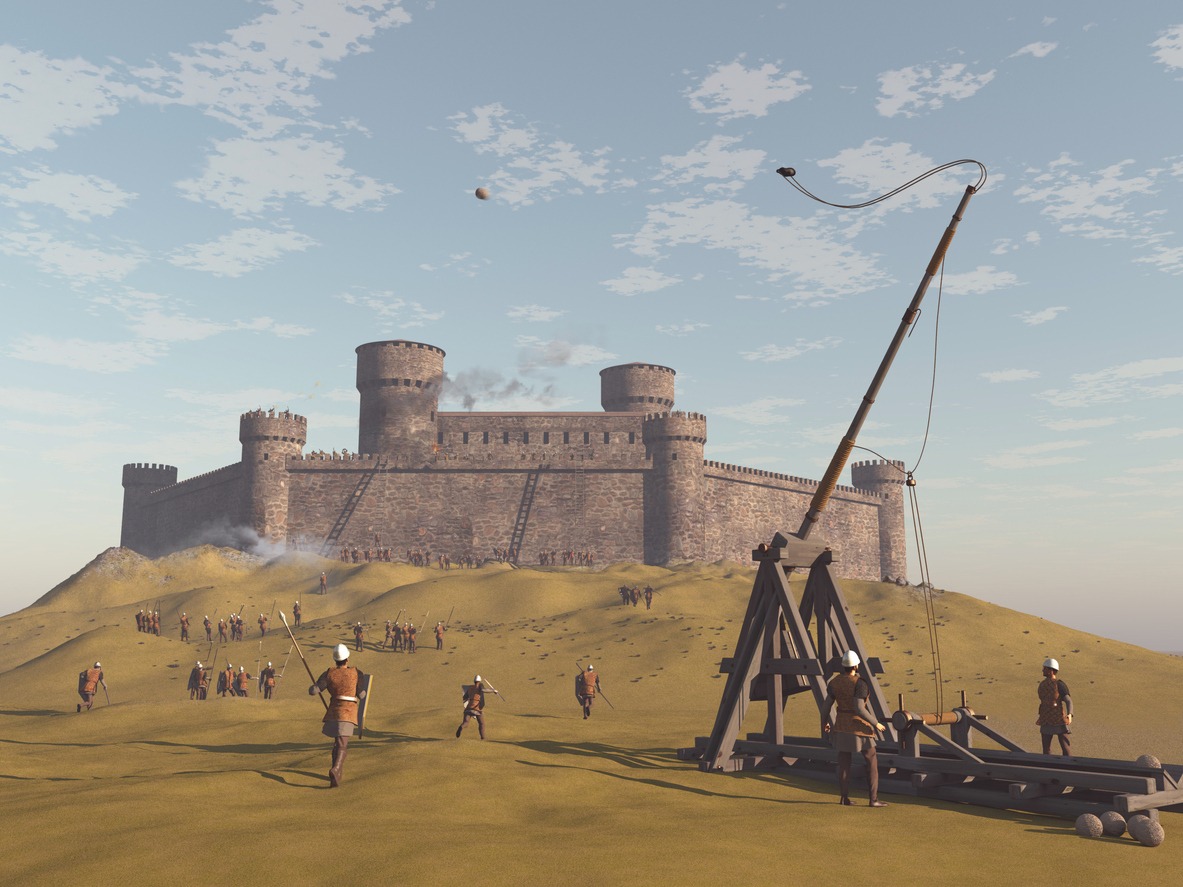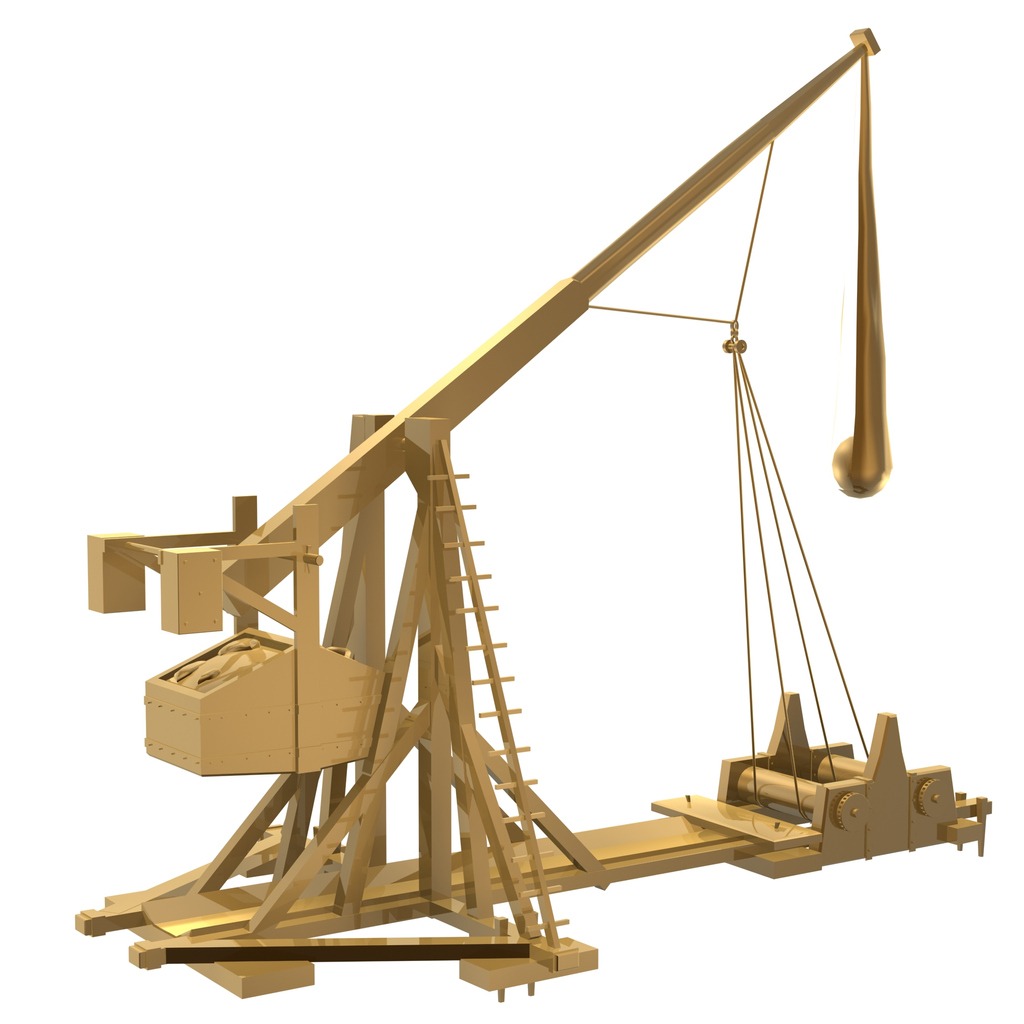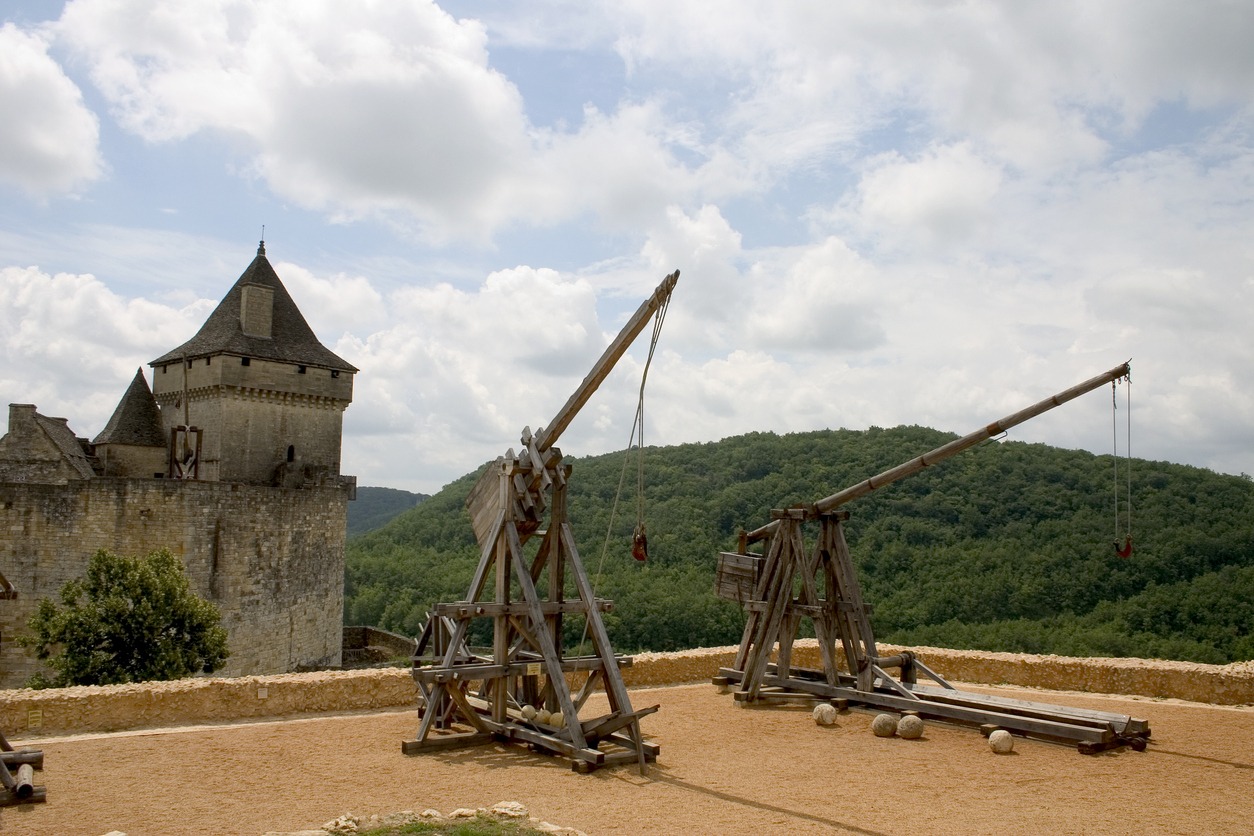The trebuchet, a siege engine of medieval times, stands as an iconic symbol of pre-modern warfare, embodying the blend of art and science in military engineering. Originating in ancient China and later adopted and refined in Europe during the Middle Ages, the trebuchet was a formidable weapon that transformed the art of siege warfare. Unlike its simpler predecessor, the catapult, the trebuchet utilized a counterweight mechanism to hurl projectiles with unparalleled force and precision, making it a game-changer on the battlefields of the era.
This article delves into the rich history of the trebuchet, tracing its evolution from a rudimentary war machine to a sophisticated instrument of medieval might. We will explore the mechanics behind its operation, illustrating how it harnessed the principles of physics to bring down castle walls and strike fear into the hearts of enemies.
What is a Trebuchet?
The trebuchet is a type of siege engine that emerged as a dominant force in medieval warfare, renowned for its ability to launch heavy projectiles over great distances. As a feat of engineering, it stands out for its use of a lever and counterweight system, which distinguishes it from other siege weapons of the era.
Design and Mechanics
The basic design of a trebuchet involves a long wooden arm mounted on a pivot, with a sling at one end and a heavy counterweight at the other. When the trebuchet is fired, the counterweight drops, causing the arm to swing upwards. The sling, which holds the projectile, whips around, gaining momentum, and at the optimal point, releases the projectile towards the target. This design effectively converts the potential energy of the counterweight into the kinetic energy of the projectile.
Types of Trebuchet
Trebuchets come in two main types: the traction trebuchet and the counterweight trebuchet. The traction trebuchet, an earlier and simpler form, relies on human muscle power, with people pulling ropes to swing the arm. The more advanced counterweight trebuchet, which appeared in Europe around the 12th century, uses a weight for propulsion, allowing it to launch heavier projectiles further and with greater consistency. Here are more details about these two types of trebuchet:
- Traction Trebuchet – an earlier and simpler design that is operated by teams pulling ropes to swing the arm. This design’s primary advantage lies in its simplicity and mobility, as it requires less material to construct and can be more easily assembled and moved. Additionally, the human-powered mechanism allows for a quicker rate of fire compared to its counterweight counterpart. However, its reliance on human strength limits the force and range of the projectiles it can launch.
- Counterweight Trebuchet – a type of trebuchet that emerged in the 12th century and uses a heavy counterweight to propel its arm. This design allows for the launching of much heavier projectiles over greater distances, delivering more destructive power. The counterweight trebuchet also offers greater consistency and accuracy, as the mechanics of the counterweight are more predictable than human strength. However, these advantages come with drawbacks: the counterweight trebuchet is more complex to construct, requires more resources, and is less mobile, often needing to be assembled on-site. Additionally, its rate of fire is slower due to the time needed to reset the counterweight.
Operational Capabilities
The trebuchet was capable of hurling a variety of projectiles, including stones, burning tar, dead animals, and even diseased corpses, with the latter two used for psychological warfare and to spread disease within enemy ranks. The range and power of the trebuchet made it an indispensable tool for besieging fortifications, capable of demolishing walls and towers that were previously impervious to lesser siege engines.
Impact on Warfare and Engineering
The trebuchet represented a significant advancement in siege technology. Its development required a deep understanding of physics, particularly leverage and gravity, and its construction demanded considerable resources and skilled craftsmanship. The trebuchet remained a key military asset until the advent of gunpowder, which eventually rendered it obsolete.
The Invention and Development of the Trebuchet
The invention of the trebuchet is a subject of historical intrigue, marking a significant evolution in siege warfare technology. The origins of this formidable siege engine are traced back to ancient China, with subsequent adaptations and refinements across various cultures.
Early Beginnings in China
The earliest form of the trebuchet, the traction trebuchet, is believed to have been developed in China around the 4th century BC. This version, powered by teams of people pulling ropes, was initially used for hurling stones and other projectiles in military confrontations. Chinese historical texts, such as the “Mozi,” provide some of the earliest references to these siege machines, highlighting their use in warfare during the Warring States period.
Spread and Development in Europe
The knowledge of the trebuchet traveled westward, possibly through the Silk Road or during the Mongol invasions, reaching the Byzantine Empire and later medieval Europe. It was in Europe during the Middle Ages that the trebuchet underwent significant refinements, most notably the transition from traction to counterweight propulsion. This transformation marked the birth of the counterweight trebuchet, a more powerful and efficient version capable of launching heavier projectiles over longer distances.
Innovations and Variations
The exact timeline and process of these innovations remain a subject of debate among historians. Some attribute the introduction of the counterweight trebuchet to the Byzantines, while others credit its development to the inventive minds of medieval European engineers. Regardless of its precise evolutionary path, the trebuchet’s impact was unmistakable. Over time, various cultures adapted and modified trebuchets to suit their specific military needs, leading to a range of designs and sizes.
Conclusion
The trebuchet stands as a monumental achievement in the history of military engineering, a testament to human ingenuity and the relentless pursuit of technological advancement. Its development not only revolutionized siege warfare but also marked significant progress in the understanding of physics and mechanics.
While the advent of gunpowder and cannons eventually rendered the trebuchet obsolete, its impact on the art of war and engineering remains indelible. The trebuchet endures not just as a symbol of medieval conflict but as a reminder of a time when the principles of leverage and gravity were harnessed to achieve feats that seemed almost magical in their power and scale.


